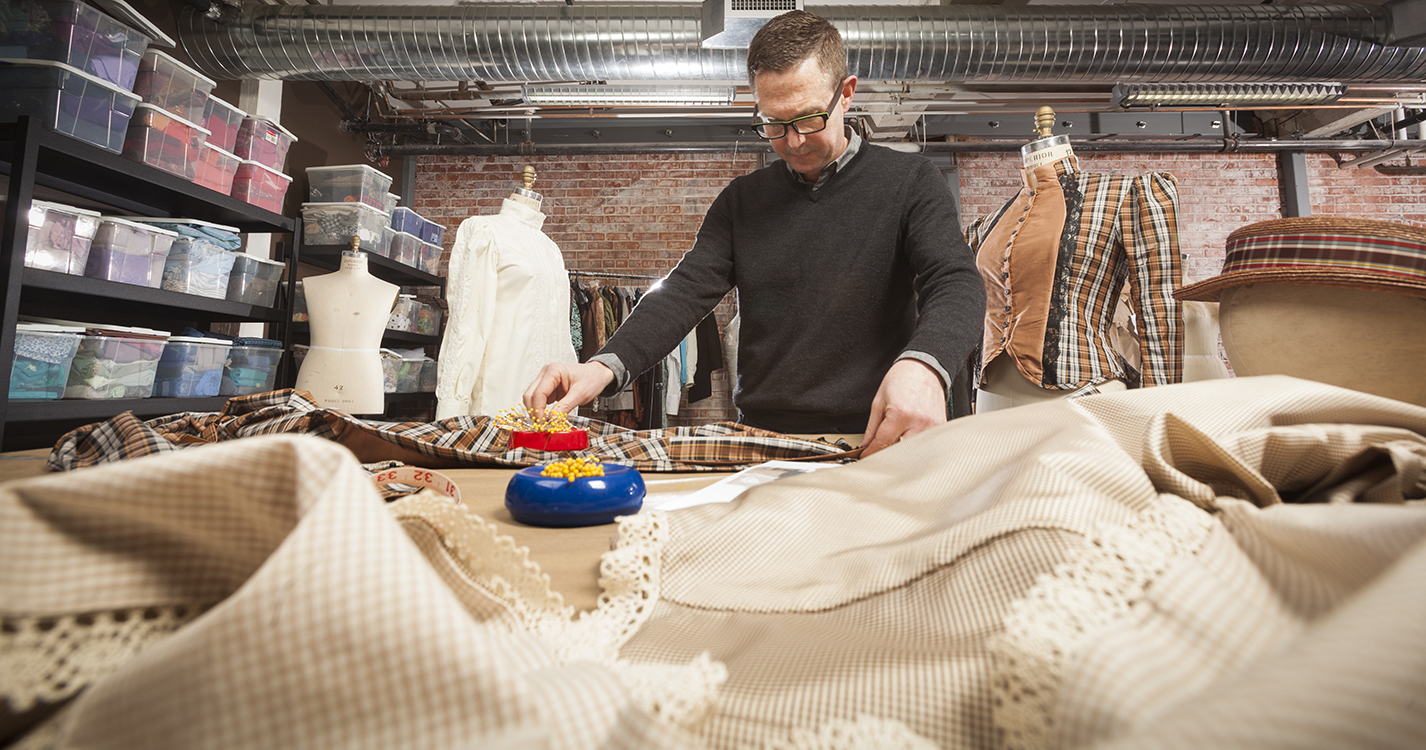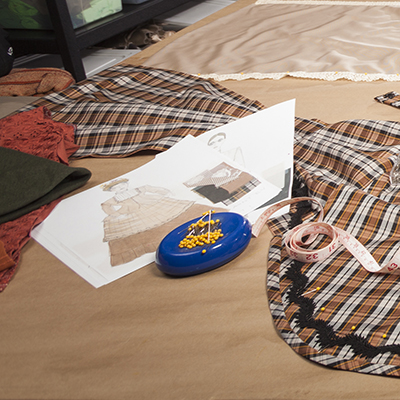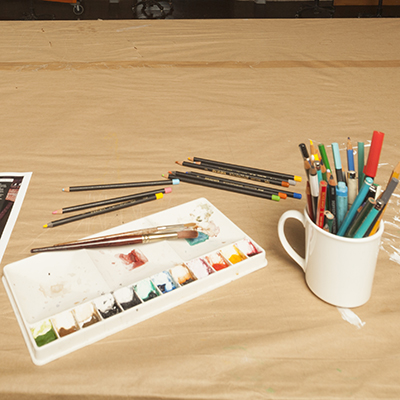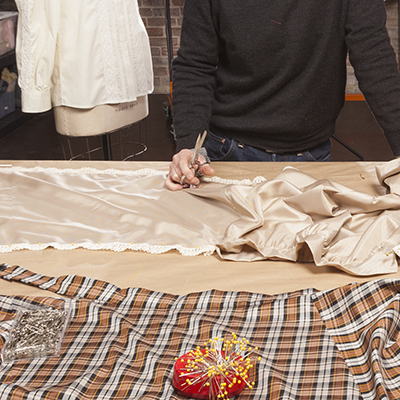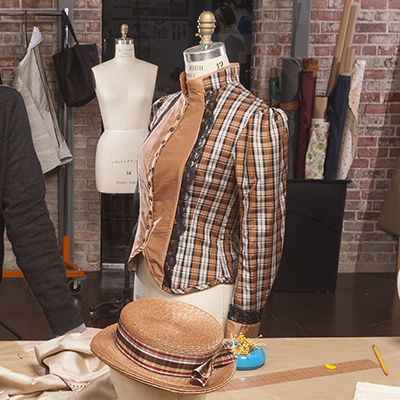As a costume designer, he can create clothing that shows the changing of seasons and the end of mourning, as well as signal affluence or poverty, innocence or corruption. Fashions track the passage of time and mark historic moments or events.
And in Brewer-Wallin’s clever hands, color, fabric and texture can reveal a dramatic character’s nature and evolution.
Brewer-Wallin, an associate professor of theatre, has specialized in costume design for about three decades. He started at Lewis & Clark College in Portland, Oregon, where, as a visual arts and religious studies major, he created a Jewish prayer shawl and several liturgical robes as part of his thesis project.
After earning his MFA at the California Institute of the Arts, he worked as an entertainment costumer at Disneyland Resorts and a costume designer for music videos, independent films and main stage productions. He brought his talents to Willamette in 2000.
“What I love about the work is that it’s always different,” he says. “It allows me to immerse myself in a new time and place, playing into my love for creativity and history.”
Each season, Brewer-Wallin designs the costumes for three mainstage plays and one dance concert — making everything from military regalia and livery to kimonos and evening gowns.
A climate-controlled storage room in the recently renovated Pelton Theatre building holds thousands of wigs, shoes, patterns and costumes from previous productions. If he can’t find what he needs there, Brewer-Wallin makes something new.
While he designs the costumes and patterns, student interns and volunteers use sewing machines to make the garments.
These are some of the tools essential for their work:
1. Image Board
Brewer-Wallin plans his costumes about three months in advance of each production. Using the play’s time period, seasons and location as a guide, he researches photos, drawings and paintings and pins color copies to an image board for feedback from the director, scene designer and lighting designer. “When I got into this work 30 years ago, I would go to the library for research,” he says. “Although I still browse the stacks in the library, now, with the Internet, I can access images day or night.”
2. Art Supplies
He starts with a simple pencil sketch of each costume, then selects the fabric. He uses colored pencils and watercolors to add pigment and texture to the drawings, matching the fabric swatches. “I like to think of costume rendering as a means of communication,” he says. “It communicates an idea to the director and designers, helps actors imagine what they’ll look like on stage, and acts as blueprints for creating the patterns and sewing the garments.”
3. Fabric Shears
Brewer-Wallin acquired his shears in 1996 while in graduate school. Sharpened every two years, the shears are engraved with his name and adorned with a scrap of fabric so students don’t confuse his pair with their own.
4. Dress forms
Male and female dress forms help designers see their costumes in three dimensions. Duplicating the cast members’ measurements exactly — from their waist circumference to inseam length — the dress forms are padded, if necessary, to achieve the desired sizes. Changes are inevitable, though, especially as actors’ measurements may fluctuate during a busy rehearsal schedule. So, Brewer-Wallin and his team stand by for alterations — right up to the last minutes before a show begins.

